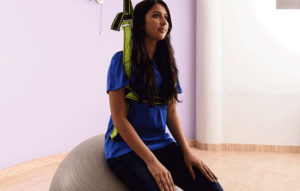Vestibular Rehabilitation
Types of Vestibular Rehabilitation Therapies
Vestibular rehabilitation is a type of physical therapy that focuses on treating individuals with vestibular disorders, which are conditions that affect the inner ear and the balance system of the body. These disorders can cause symptoms such as vertigo, dizziness, unsteadiness, and difficulty with visual stability.
Vestibular rehabilitation aims to improve the individual’s vestibular function, balance, and overall quality of life. This is achieved through exercises that target specific areas of the body, including the eyes, inner ear, neck, and trunk. The exercises are designed to help retrain the brain to correctly process and integrate sensory information related to balance and movement.
Vestibular rehabilitation may be used in conjunction with other therapies, such as medication, to manage symptoms and improve overall function. It can be beneficial for individuals of all ages who are experiencing vestibular problems, including those with conditions such as inner ear infections, Meniere’s disease, and stroke.
The success of vestibular rehabilitation depends on a variety of factors, including the individual’s overall health, the specific vestibular disorder, and the severity of the symptoms. It is important to work with a qualified and experienced physical therapist to develop a personalized treatment plan that is right for you.
- Habituation exercise:
This form of exercise is used for treating dizziness symptoms produced because of self-motion or produced due to visual stimuli. Habituation exercise is for those patients, who report increased dizziness when moving around, especially when they make some quick head movements, or while changing positions when they look up or bend over. This form of exercise is proper for those patients reporting increased dizziness in some visually stimulating environments like grocery stores and shopping malls.
- Gaze stabilization:
Gaze stabilization is another set of exercises used for improving and controlling eye movements to make the vision clear during head movements. These exercises are proper for patients who report issues seeing clearly as their visual world seems to jump or bounce around, like when reading or trying to identify objects in the environment, which are moving around.
- Balance training exercises:
Balance training exercises are designed to improve steadiness to perform daily activities for work, self-care, and leisure in a successful manner. Here, the exercises to improve balance must be designed to address specific underlying balance issues of every patient. However, these exercises must be moderately challenging but safe for the patients to perform. Some of the features of balancing exercises will be stationary positions and dynamic movements, visual and somatosensory cues, coordinated movement strategies, and dual tasks.

Risks of Ignoring Vestibular disorders
Primary speaking vestibular disorders like dizziness won’t be life-threatening during their initial stages. However, if kept ignored for a long time, such dizziness can take a toll on your mental health and can prove to be uncontrollable and dangerous. Simple daily activities like crossing a road or cooking will prove to be difficult as you never know when you might fall on the road. So, such situations can prove to be fatal. Therefore, it is important to take vestibular rehabilitation therapy in its initial stage.
